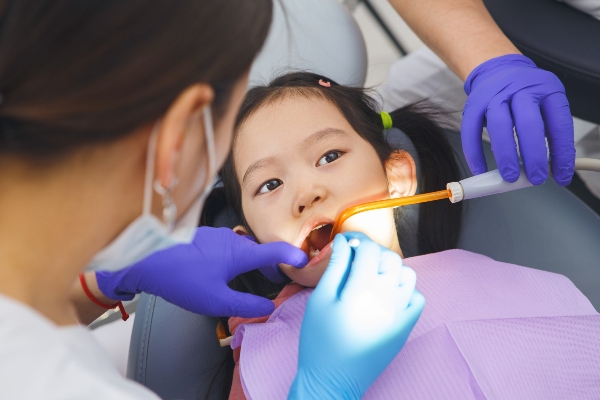 Pediatric dentistry focuses on oral health prevention and treatment for toddlers, early childhood, and adolescents. Tooth decay is a more common oral health concern that pediatric dentists treat. This review looks closely at how a pediatric dentist can treat (and help prevent) tooth decay.
Pediatric dentistry focuses on oral health prevention and treatment for toddlers, early childhood, and adolescents. Tooth decay is a more common oral health concern that pediatric dentists treat. This review looks closely at how a pediatric dentist can treat (and help prevent) tooth decay.
Tooth decay overview (from pediatric dentistry)
Children are highly vulnerable to cavities on primary teeth. Therefore, the primary goal of pediatric dentistry is to prevent tooth decay through good oral hygiene, smart dietary choices (i.e., limiting sugar), and routine cleanings. However, if and when cavities do occur, pediatric dentists can treat them in a minimally invasive manner.
Tooth decay defined
Tooth decay refers to the weakening and erosion of enamel (the outermost and visible layer of teeth). Tooth decay usually occurs due to acidic attacks on teeth caused by combining bacteria and biomolecules such as carbohydrates. The most common symptoms of tooth decay are:
- Tooth discoloration
- Dark spots
- Tooth sensitivity
- Tooth pain
Tooth holes, known as cavities, form once decay becomes more severe. This is a relatively slow process, but erosion is irreversible once cavities occur. Subsequently, early detection and prevention are imperative.
Diagnostics
Diagnostic tests can help determine cavities or teeth at high risk of decay. Diagnostics primarily include an oral examination and dental X-rays. Both are non-invasive. These preliminary tests can also help assess the overall oral health of your child, determine if orthodontic care is needed (or may be needed in the future), and more.
Treatment for minor tooth decay
In the early stages of tooth decay, the enamel weakens. Weak enamel can lead to discoloration and minor sensitivity. Often, minor decay is reversible. Subsequently, it is treated differently and with less invasive treatments and procedures. The recommended early-stage tooth decay treatments often include fluoride to remineralize the tooth (or teeth) and dental cleaning.
Treatment for severe tooth decay
As mentioned, once the tooth enamel erodes, restorative treatment is necessary as enamel cannot grow back. A dental filling is the most common and popular form of tooth decay treatment. In most cases, this involves a tooth-colored material (either amalgam or ceramic). In addition, pediatric dentists may recommend a baby root canal or a tooth extraction for more severe decay.
Tooth decay prevention
As discussed, the primary focus of pediatric dentists is on preventing tooth decay and other oral health concerns. Preventive procedures such as dental sealants can help reduce the risk of cavities in vulnerable areas of teeth. Educational services to help children maintain a quality oral care routine between visits can also help prevent tooth decay.
Visit our pediatric dentistry if your child shows signs of tooth decay
If your child has signs of tooth decay or if it has been more than six months since their last dental visit, then call our office today. We can find the right time for you and your child to see our kid-friendly staff at our pediatric dentistry practice and restore the health of your child’s teeth.
Request an appointment or call Hudson Valley Pediatric Dentistry at 845-363-4177 for an appointment in our Middletown office.
Recent Posts
A child dentist can help your child achieve better dental and general health. Regular visits allow your child to get used to dental checks, tools, and equipment. Dental fear disappears, and the young patient can continue having a bright, painless smile. Here are what parents like you should look forward to during child dentist appointments.Choosing…
Cavity treatment for kids is essential for a child’s oral health. Dental decay can cause discomfort, causing the child to lose focus at school. It can even result in low self-esteem and malnutrition. Treating cavities can improve your child’s general health. Here are effective techniques for cavity treatment for kids.There are cases when fillings cannot…
Parents play a crucial role in their children's tooth care by ensuring their children get started on the right path to optimal dental health. This involves overseeing children's tooth care at home while also helping them develop healthy dental habits and ensuring they see a pediatric dentist regularly.Parents will need to keep their child's mouth…


